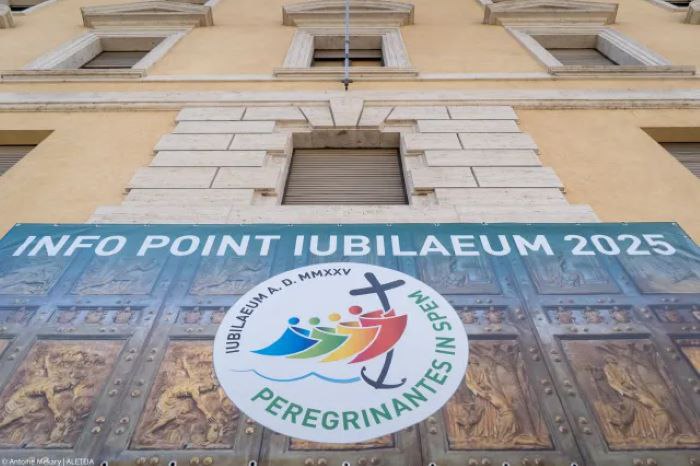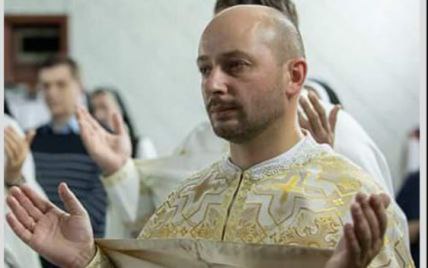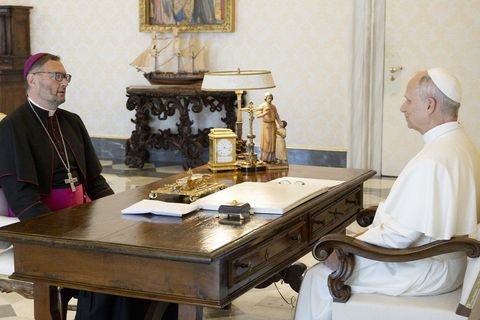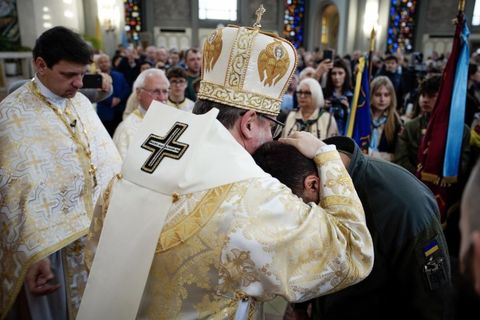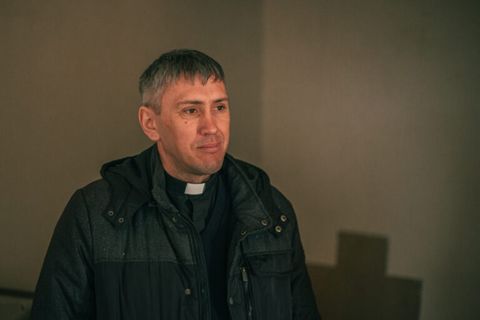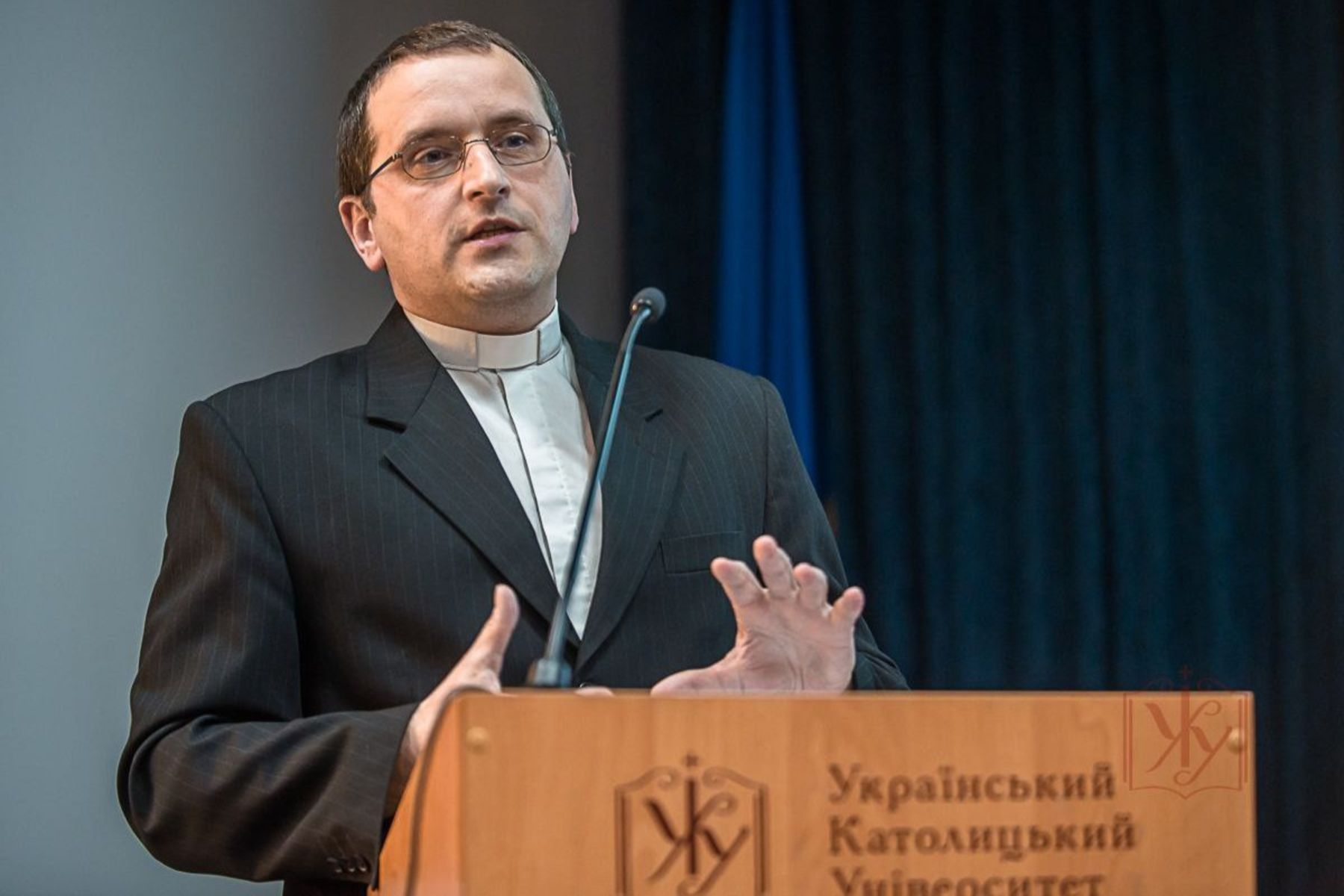
Church intensively seeks information about modern witnesses of faith: Father Taras Bublyk
In July 2023, Pope Francis established the Commission for New Martyrs — Witnesses of the Faith at the Vatican’s Dicastery for the Causes of the Saints. Given the 2025 anniversary, which will be held under the slogan “Pilgrims of Hope,” this commission is tasked with developing a catalog of “all those who shed blood for their faith in Christ and the witness of His Gospel.” Accordingly, by his decree of January 9, 2024, the Father and Head of the UGCC, His Beatitude Sviatoslav, appointed Fr. Taras Bublyk as a delegate from the UGCC to cooperate with this Vatican Commission.
Fr. Taras Bublyk, a delegate from the UGCC and a researcher at the Institute of Church History of UCU, discusses the importance of this cooperation for the Ukrainian Greek Catholic Church. He explains how the search for information is proceeding, who can be included in the list of candidates for new martyrs, the sources of data, and how each individual can contribute to the Church in this regard.
Father Taras, please tell us more about the Pope’s initiative to create a Commission for New Martyrs and Witnesses to the Faith at the Dicastery for the Causes of the Saints. What is its mission and main tasks?
This commission was established on July 5, 2023. Its main goal is to collect information about new martyrs to mark the jubilee year of 2025. This continues Pope John Paul II’s work in 2000 to compile a catalog of future martyrs. It is important to note that this is not the start of the beatification process but rather a collection of information about people who can be classified as new martyrs, broadly speaking.
What is crucial here is that although the Apostolic See organizes this effort, one of the tasks is to collect information about Catholics and representatives of other Christian denominations who lived in obedience to the Gospel and Christian values.
What is special about the anniversary year of 2025 for the Church?
The Pope proclaimed the Bull on the Church’s Jubilee of 2025 in May 2023. From Vatican sources, we know that in this document, “Spes non confundit” (“Hope Does Not Disappoint”), the Pope addresses various issues, including the single date of Easter, the procedure for opening and closing the Holy Doors of the four papal basilicas in Rome, the problem of declining birth rates, and topics concerning youth, the poor, the lonely, and confession. He especially invites the faithful to reflect on the testimonies of martyrs from different Christian traditions. The goal of the jubilee year is to bring “peace to the whole world, which has once again immersed itself in the tragedy of war.”
A nine-language portal with all necessary information about the anniversary year, including opportunities to register for events, such as a pilgrimage to the Holy Door, is available.
The new commission should collect data on the new martyrs who perished after 2000. What is the procedure in the Ecumenical Church and the UGCC?
The Vatican reports that more than 550 witnesses are currently known, with established circumstances of their death and their service to the Church and the people of God. The contribution of many among the faithful of the Eastern Catholic Churches has been noted, with particular attention given to the Middle East and Asia. The ecumenical value of martyrdom, in a broad sense, and the testimony offered by Christians of other denominations are also emphasized.
The Vatican Commission researches and meets with witnesses of the faith, as we read directly in their news, “whose life and death are marked by the Gospel, love for the weakest, the search for peace, and the painful confrontation with multiple evil designs, without however ever abandoning faith in goodness.”
When we talk about the twentieth century, we have many representatives of the clergy and laity who can be called martyrs for their faith. This period of repression and persecution is actively studied and analyzed. As for the twenty-first century, we face a certain challenge because we still need to collect information, conduct research, and comprehend the information gathered.
Can you specify the names of the UGCC that will be included in this list?
For example, Sister Servant Anna Hlova, who was murdered in Vinnytsia while working in the local Greek Catholic community, devoted a lot of time to orphans. Her story can be seen as a certain aspect of martyrdom.
Another example is Father Petro Pavlyshyn, a priest who served in Russia. He belonged to the Stryi Eparchy, graduated from the Lviv Seminary, and was a married priest. Later, he voluntarily went to serve in Nizhnevartovsk, Russia. The priest was subjected to repression by the Russian authorities, who kept him under control and created various obstacles. He died of the coronavirus in 2021, but his life can be viewed as a martyrdom. According to the public, this man served Greek Catholics in very difficult circumstances. The Russian authorities had an extremely negative attitude toward Ukrainians even before the full-scale invasion. This is also a kind of martyrdom.
We have a question whether the people who are part of the Heavenly Hundred can be taken into account. They are of different faiths, ages, and backgrounds. The main goal of the Revolution of Dignity is to defend civil rights and freedom and to honor human dignity in our country. This is also an argument in the context of Christian values — as a sacrifice for the sake of one’s neighbor. These new martyrs should form a catalog, but this does not mean that beatification processes should begin now. This is rather our opinion. At least for some, like Sister Anna, this may be a preparatory stage.
His Beatitude Sviatoslav appointed you as a delegate from the UGCC. What are your duties?
My main task as a delegate is to collect information and pass it on to the Vatican. Therefore, first and foremost, I search for and ask people who may possess such information. Now, there is a war going on. We ask whether we can submit those who died during the war. Obviously, the most important criterion for a candidate for martyrdom is faith. A person must be a believer and a practicing Christian.
What has already been done?
We have developed a questionnaire based on the Vatican questionnaire, which contains questions about possible martyrs. There are two versions of it: for Catholics and people belonging to other faiths. They include biographical data, literature, and information about witnesses to the life of the candidate for martyrdom.
How can we, the laity and the youth communities of our Church, contribute to this?
At this stage, it is important to inquire and seek information. We have various organizations. Often people do not fully understand or do not think that a person who lived next door can be a candidate for martyrdom. There is also not much time for this. The Vatican asks for information by the end of June. In the early 2000s, there were still many priests who were imprisoned and lost their health there. They did not die a martyr’s death, but they suffered. First, I am looking for information, family contacts, and various clues that would help. I also read biographies of people who can become candidates. Now I cooperate with military chaplains. Very often, I ask questions. It is also important to know what they think of a person, whether they generally consider him or her to be pious; even death could have already revealed the virtues of such a person who could become a new martyr. Therefore, please spread the word in your communities that the Church is actively seeking information about possible contemporary witnesses to the faith.
Those who have information are asked to fill out a Google form or call 096 28 88 164 — Fr. Taras Bublyk.
Prepared by Khrystyna Potereiko,
The UGCC Department for Information
